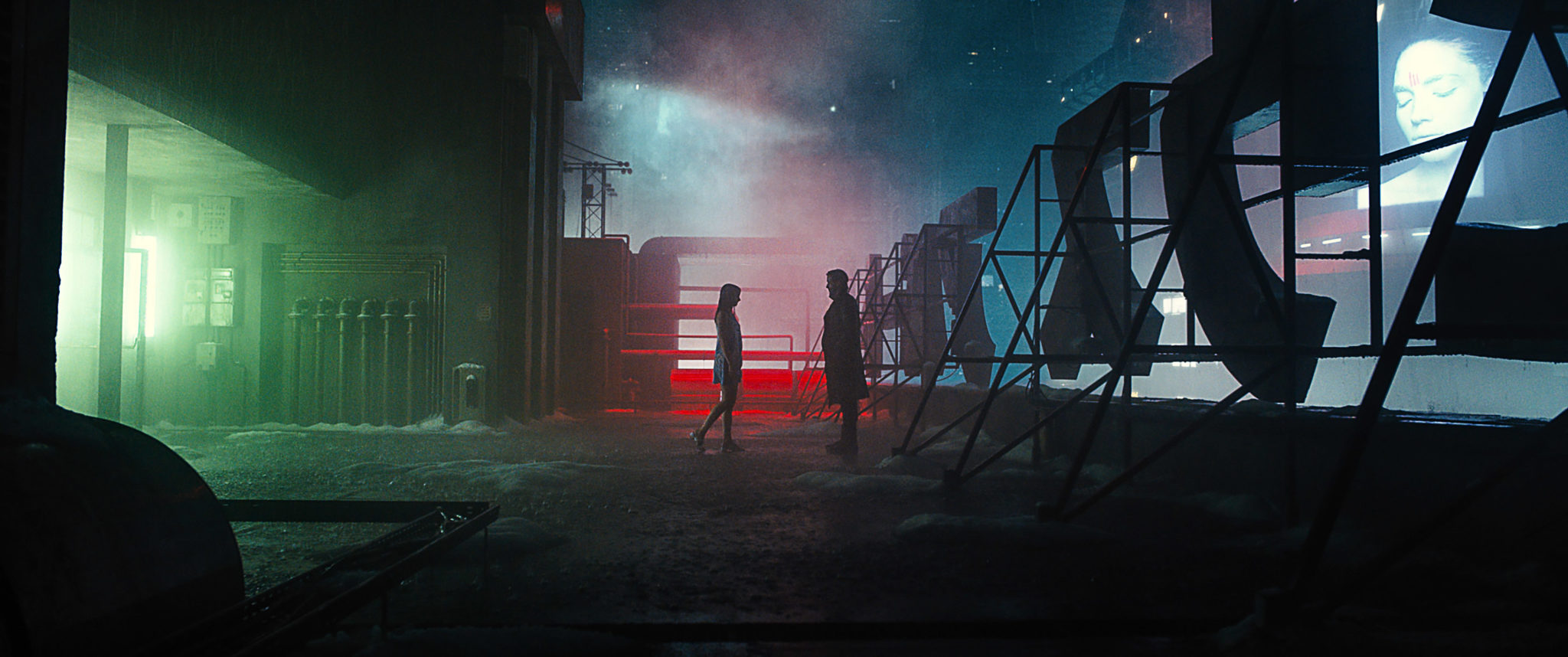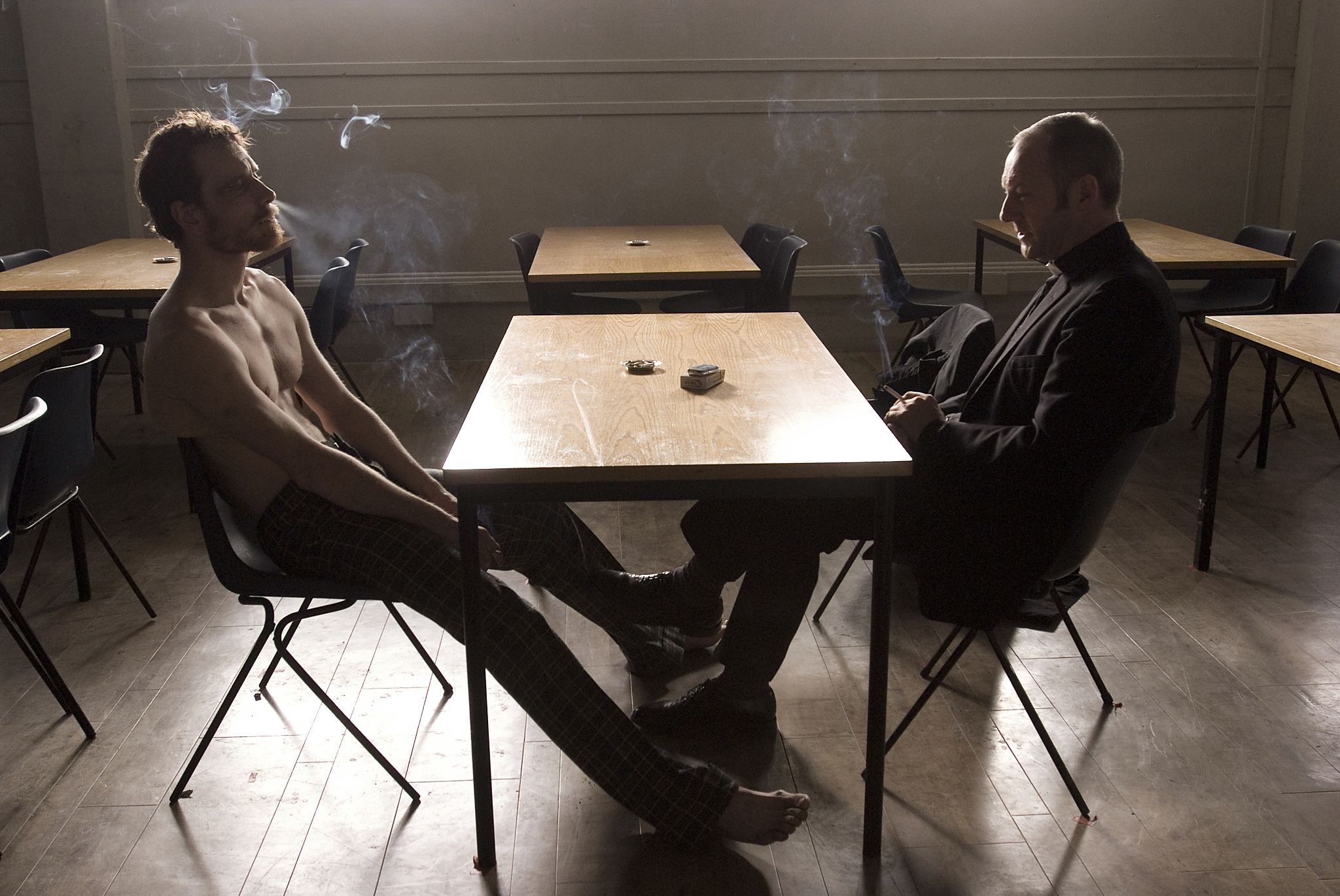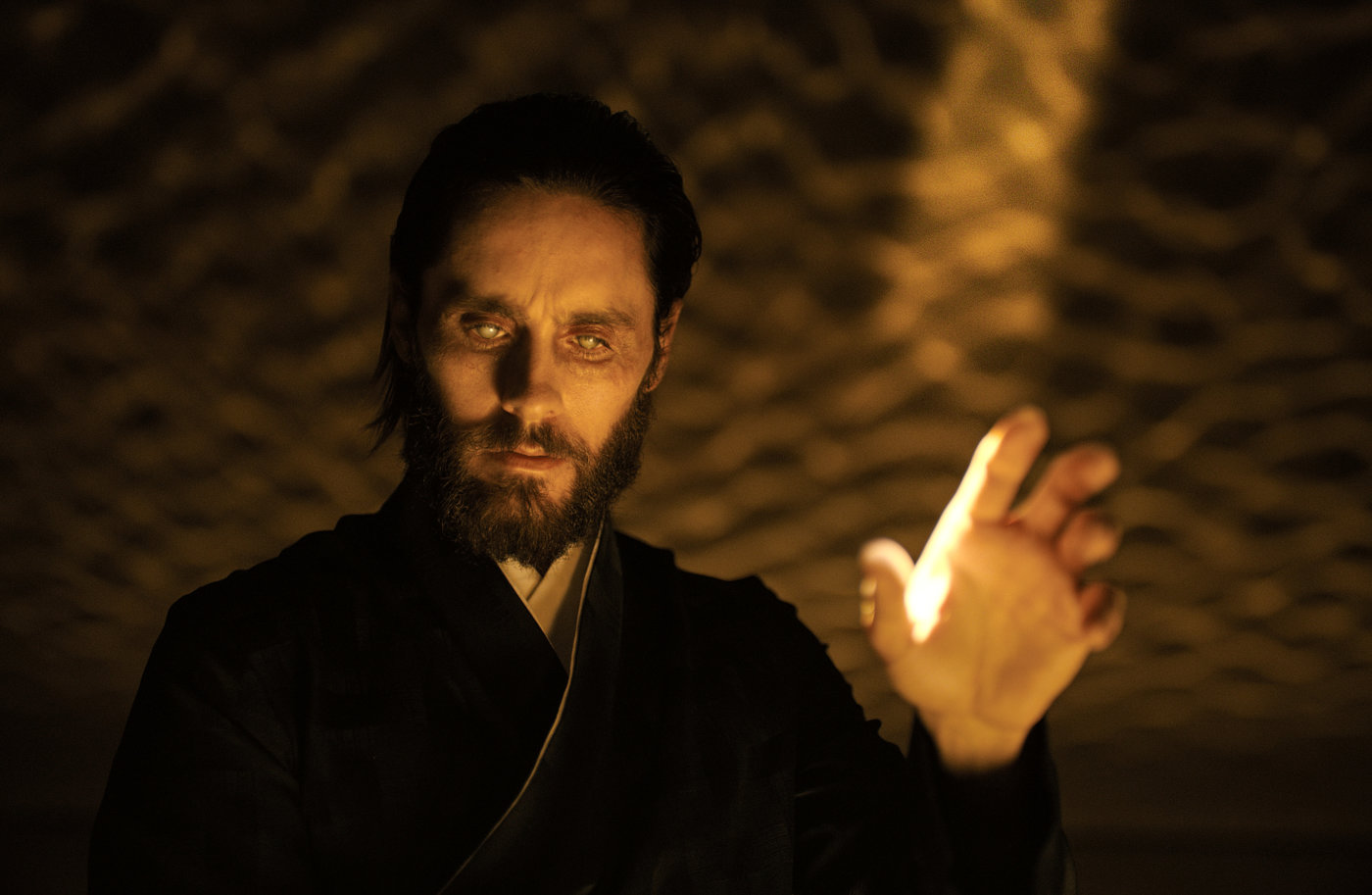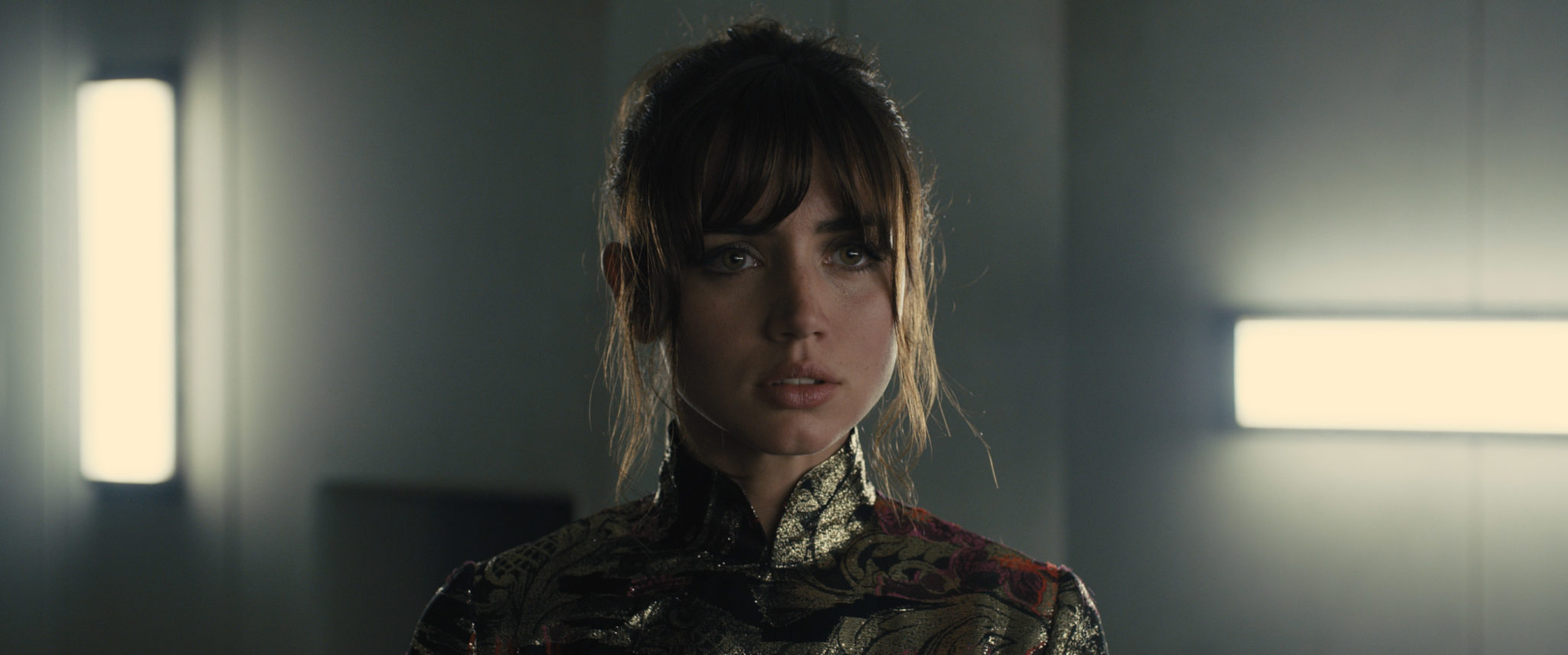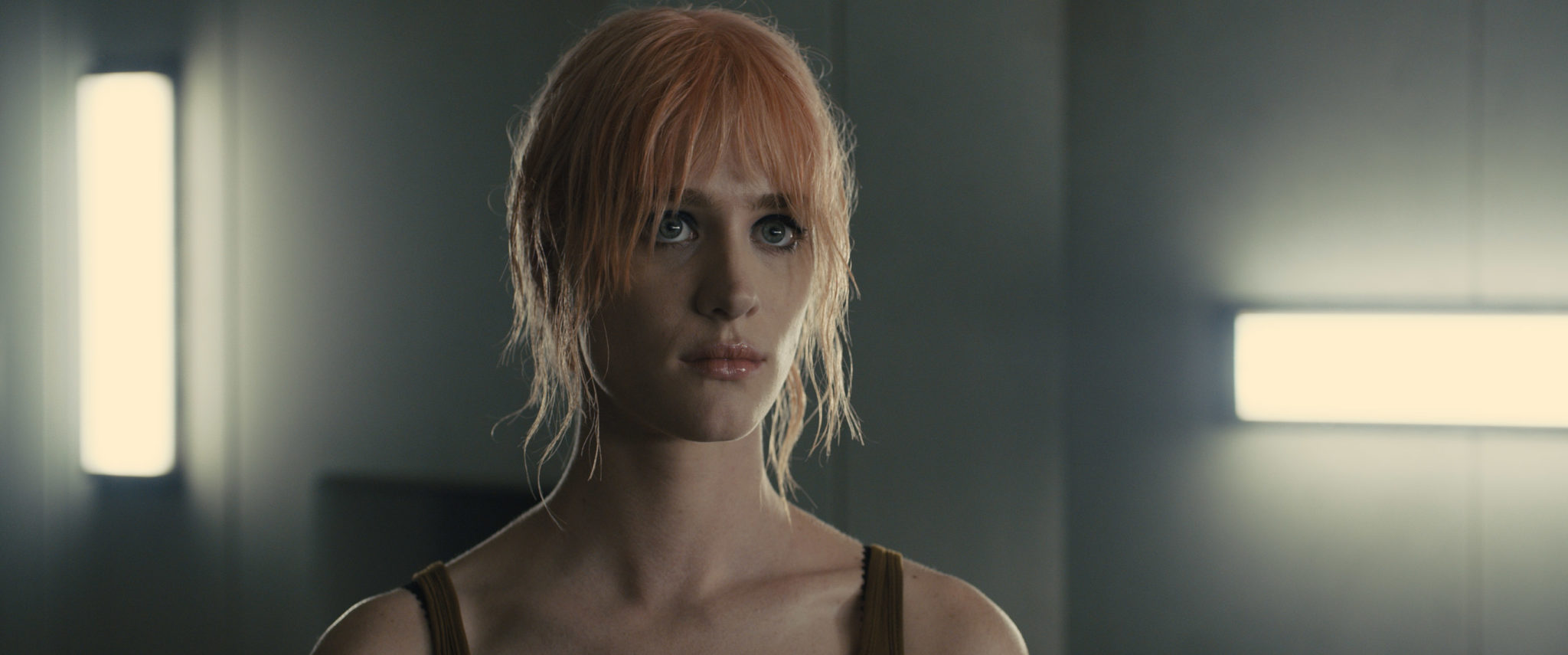Doing Justice to Replicants, Roger Deakins, and the Meaning of Life in an Existentially Fraught Sci-Fi Sequel
How do you follow up a 35-year-old science-fiction classic like Blade Runner? Without compromise. Anyone who expected Blade Runner, a dystopian drama told with the troubled visual style of 1940s film noir, to be rebooted as a tidy Hollywood blockbuster must have been surprised when French-Canadian filmmaker Denis Villeneuve (Arrival, Sicario) was hired to direct. The result — dark, thoughtful and intense, clocking in at 164 minutes — is anything but safe franchise filmmaking. Ryan Gosling stars as a “blade runner” named K — a biologically engineered replicant employed by the LAPD to hunt down and “retire” other replicants. In the course of his duties, he uncovers a closely held secret about the biology of replicants that leads him down an investigative rabbit hole in pursuit of Rick Deckard (Harrison Ford), a former blade runner who’s been missing since the events of the first film. His companion is Joi (Ana de Armas), a holographic AI character who may be sentient, but is one step farther away from humanity than K. As the story unfolds, K begins to wonder where he came from — and what it means to be human in the first place.
Both dazzling and frightening, Blade Runner 2049 is a grim existential journey with a light at the end of the tunnel, with just a few grace notes offering hope for humanity in a near-future world without sunlight. We talked to film editor Joe Walker, a 2018 ACE Eddie Award nominee for the film, which is his third feature in a row made with Villeneuve, about the story’s pacing, the riotous VFX-heavy set piece that was almost left on the cutting-room floor, and the meaning behind what may be the most existentially fraught threesome ever seen on movie screens.
StudioDaily: Blade Runner has gained such a reputation over the years. People have had decades to tease out all different meanings, and even the film’s maker, Ridley Scott, has layered some meanings over it by saying perhaps the protagonist is the thing that he was pursuing. It started to become such a part of the fabric of science fiction cinema and the genre as a whole. So after all these years, you’re going to dive back into that world. Did you feel any special responsibility in terms of the original film and the franchise? Or do you just feel a responsibility to simply make the best movie you can from that script as a standalone achievement.
Joe Walker: I’m more inclined towards the latter. It was made easier by the fact that we all had such a love for the show. All of us were Blade Runner fans, and from the very first moment I got wind that Denis was taking it on, we screened the film. My team and I watched it in Montreal a couple of times. We were always playing it. At one point we vowed that we shouldn’t let six weeks go by without reminding ourselves of the original. It was not really a conflict between the two, because we always wanted to make our own film. With Denis as the director, it was unlikely to be anything but infused with his passions and filmmaking ability. I mean, it’s a daunting task to nurture that project and, for the longest time, people would give me the strangest look after I told them I was working on Blade Runner. It was a sort of mixture of excitement and fear. So we just painted the crosshairs on our T-shirts, prepared for the snipers and did our best to make a film in its own right.
Were there early conversations about what what the mood was going to be, what the tempo was going to be, or just how you wanted audiences to feel as they come into this world? Or do you just dig in and start cutting the footage as it comes back?
I’ve worked with Denis back to back on three films now. I’m on my fourth film with Steve McQueen and there have been some years in between each of them, so when we finish a project, we don’t know when we’re going to meet again and start again. But with Denis it was pretty much we’d finish a project on a Friday night and say, “See you on Monday in Budapest.” I was finishing Arrival as he was prepping Blade Runner and I used to describe it as being a bit like Rick Wakeman on stage when he’s got two keyboards. [Laughs.] He would spend the morning with Roger Deakins and Sam Hudecki, his storyboard artist, and Dennis Gassner, the production designer, and then he’d come over to me in the afternoon to look at Arrival. So just occasionally, out of idle curiosity, I would gather up hints of what was coming my way. I didn’t read the script for the longest time while they were still working on it. When Denis is doing that prep work with Roger and Sam, they’re working it out conceptually as much as storyboarding it. So the first thing I saw was a sketch of Sam’s showing the rooftop scene where K and Joi are in the rain. It was just a wide shot but that gave me a visual clue to what the world was going to be like. It was very tantalising.
We were always talking about the original film and its very special quality where you’re not too sure whether it’s sound design or music that’s playing. That appealed to us as something we should touch on. So it’s really gradual, you know. Keep your eyes open and your ears open and respond to material as it comes in. It’s very difficult for editors to talk about how they’re going to cut a film before they’ve received any material. It makes interviews with the director very hard. It was a long, slow sort of process to start work. And I wouldn’t have it any other way.
The film takes place largely in a series of episodes set in distinct locations. You’ve got Trash Mesa and the orphanage, and then you move on to Las Vegas, which has its own feeling. But we go to these places, and then we leave — did you think about how you were going to keep audiences oriented and make sure they knew where they were, storywise, as the locations shifted with those larger episodes? And did they serve as seams that allowed you to tailor the way the movie flowed as it came together and you realized what the needs the story were going to be? I guess that’s two different questions.
Well, it’s interesting, because sometimes you want to pull the audience along with a steady sense of flow through the story. And other times there is a great advantage to surprising people. Definitely when we cut to the Las Vegas sequence we bore that in mind in the edit, and we removed some material that connected the dots. And so the audience is immersed. You get a hint of where he’s going because he visits a guy called Dr. Badger who points to the origins of a toy horse, and then we’re immersed in a kind of Syd Mead view of Las Vegas in the future. It just felt right to remove any connective tissue that took you ploddingly towards a new location. In answer to both questions, you’re always trying to build these longer phrase lengths and Las Vegas in particular gave us a particularly decent phrase. It is a long stretch of a movie that has its own individual parts, but you try and get it to flow. Our intention was to try and do it without music, but to do it with really good sound design and this sense of an inexorable tread as he moves closer bit by bit towards Deckard. That’s somebody we know we’re going to meet but it felt like an opportunity to tease out that discovery.
While we’re talking about Vegas I want to ask about a really bonkers scenes in the movie, which is the set piece in the showroom with all the holograms — Elvis Presley, Marilyn Monroe, dancers, and more. It’s kind of a jolt compared to what we’ve seen so far, which has been restrained in a lot of ways. Can you talk about how that was put together in the edit?
That was by far the most complex scene in editing terms. Nothing else matches up to that. There was a storyboard which, as ever with Denis and Roger, was a really great storyboard which conveyed the gestures as much as the camera positions. It really is a great blueprint. You can definitely imagine the sequence. From that they’d arrived at a previs, and then we spent a long time working on that. We were trying to work out the music elements. The original concept was that it was a cacophony of conflicting music tracks with Elvis running all the way through it. But at one stage you’d have Elvis and cowgirls and Folies Bergère dancers and go-go dancers and acrobats and Marilyn and Liberace. And we had to build in glitching. In the original plan, Elvis would dot around from place to place and the music would jump forward. So of course you’ve got to be able to playback on set so that the Elvis impersonator, Ben Thompson, could track the original music. And on top of that Roger Deakins needed to design his entire lighting set to accommodate the music and the glitches. It was no wonder that there were about 19 iterations of that cut. And then then they shoot it with the main unit and have to loosen it up because, despite the previs, Denis and Roger don’t want to use Harrison Ford as a puppet, you know? Denis wants to go in there with a strong idea of what it’s going to be but open to what the actors bring to it, which is a huge element. Having shot that material, we then had a crazily short time while they kept the set alive. We went back to the cutting room and did a rough cut of the sequence so that we could then prep all of the material to be shot in second unit, which is all the dancers. Everybody that wasn’t Harrison Ford or Ryan Gosling was shot as a secondary element. Each of them against the green screen, each with lighting matching music and matching the original shoot. And you had to have continuity — so if, in a wide shot, a Folies Bergere dancer kicked her leg up then it should still be up on the first frame of the next shot. So you can imagine breaking down 60 shots, each with its own music track and lighting track that all had to match in second unit. So to me it was real five-star Soduku Apollo Landing time.
But the journey doesn’t stop there. Having done all that, you end up with … well, I have the your most fantastic VFX temp team in editorial. Some people call that postvis, but I call them the temp team. And they would take my Avid timeline, which would have sometimes 20 selections of individual dancers built up on top of each other. I wanted to have a hand in timing that, because there were little moments that I thought were very strong and I see myself as part of the rhythm section of a film. I’m trying to be the drummer and hold all these little rhythms together — not just sound and musical rhythms but the rhythm of a dancer turning or to give that. If you went back and looked at any one of those shots, it should have some kind of special little brainstem-y ingredient that adds to the atmosphere of the thing. Having done that, we finished the shoot in Hungary, came back to Sony in Los Angeles and viewed the first assembly, and we said, ‘You know, it’s fantastic. It’s all going to work. Except for one scene. And it’s the hologram scene. It just sticks out. It doesn’t belong to the Blade Runner universe.”
It was too much about the show and we became sidelined from the drama, which is that the last time Deckard met a replicant, it was Roy Batty and he nearly died. So we’ve got to bring it back to being a manhunt, where the whole purpose of the scene is that Deckard has turned the lights on because he knows what noises are going to be made and he can disorient his enemy. We even discussed dropping it which was, after all that work, very bloody-minded. Let’s try a different approach. I’m from a sound and music background, so my first approach was to say, “OK, let’s just junk all this music that isn’t working and make it spooky. Bring back a kind of ghostliness to it.” And then the sound designer, Theo Green, came up with all these amazing little noises — lights whirring and clicking and the bulbs sort of heating up — and the music became just a few very short stabs, almost as if one speaker was intermittently spitting out some sound, which adds tension. And then I went through all the dailies. There was some material on second unit that I’d seen and really loved which was actually bits where dancers were waiting to start. You know, it’s just them heavily overlit from above. There’s one particular Folies Bergere dancer who’s just staring at camera and she’s breathing. You can see she’s alive, but she’s just waiting for the music to start. I thought it would be good to bring that back in and convey the ghostliness, the spookiness of real people who’ve been sampled at some time by what is now an old antiquated system. That sense of nostalgia is a part of science fiction. And it just fit in that scene. We changed as much as we could, but it took a lot of time.
Serve the story at all times even if you lose some of the razzle dazzle.
People always talk about dropping their darlings or killing their babies. There was one fantastic shot in the storyboards, and we did the whole thing. It was a shot of Harrison moving from left to right, and as he does so there’s a ton of Folies Bergère dancers on the stage and they’re all carefully overlapped so you’d be able to see the holograms kind of glitching against each other, with Elvis jumping from the stage to right in front of camera. It was a magnificent shot, but the carnival had taken over and you lost the tension of the manhunt.
You have to serve the bigger picture. You can’t hold onto a cut because it’s a good cut. Each individual tile that you lay down has to build to the big picture, and it’s important not to be precious and hold onto things. I really had a kind of eureka moment watching — it’s nothing to do with film editing — a documentary film with Picasso called The Mystery of Picasso, which is an amazing film where you see him painting, effectively, directly onto the lens of the camera. So we see him doing all these little sketches and we have no idea of how long it’s taking him but he does a variety of them. For one of the ones I loved, he did one kind of fantastic brushstroke that conveyed a chicken. You look at it and you think: with one brushstroke, a perfect Picasso. You could sell it now. And then he begins painting another line and there’s a bit of you that’s just incredibly anxious, in the way that I might be about a perfectly cut and assembled sequence. Don’t spoil it. Don’t ruin it. Stop right there! But he does a second stroke and he transforms the chicken into a centurion and it is even better. It is a wonderful, complex, but at the same time simple picture. What I took out of that was that I had developed the skill set to adapt things to serve a large picture. We use all the editing tools we can — sound, music, image, VFX, tempo changes all those things. That’s easy. What’s complicated is knowing whether you want a chicken or a centurion. That tells you which method is right.
Right. And it also tells you when you shouldn’t be editing much at all. For some reason I was just reminded of that shot in the middle of Hunger, which you edited for director Steve McQueen, which I think depicts a nearly 20-minute unbroken conversation. It’s like the moment that stretches. For a viewer, it can become very intense. But on a Hollywood studio film you probably wouldn’t be allowed to do such a thing.
I try to bring that aesthetic to everything I do. Let’s respect the audience’s intelligence and their ability to immerse themselves in something. There’s a tension to holding shots. You know, I never want things to be boring. But if you let things play out, you achieve some sense of the real because you’re not interfering all the time. I often see films that are overcut, and there’s a distancing effect because your hand is being dragged through it and you’re not allowed to immerse yourself in in the image. Cinema, for me, is all about peering into people’s eyes and feeling what’s going on inside their minds. And that dance between actors’ eyes, for example, is a really important thing to frame. Even if I don’t have a 17-and-a-half-minute-long wide shot to hold onto in Blade Runner I was trying to keep the tension up without overmanipulating the performance. Hopefully, that’s why people look at it and say there’s no bad performance in the film. It’s really strong. I mean, Harrison is amazing in it. No disrespect to him, but I haven’t seen his acting that good for a long, long time. We try to give it the time it needs, and not overcut and drive forward relentlessly without taking the audience along with us.
Let’s say you have cameras pointed at a tightrope walker. You could do the simplest A-to-B edit. He puts one foot down and before you know he’s at the other side. We can be efficient about it. But do we deny the audience the thrills and spills? And a certain underlying tension that I’m trying to kind of keep hold of? 12 Years a Slave was a very good marriage of that aesthetic and a story that everybody could follow. We still could hold awkwardly long on the moment where Solomon [Chiwetel Ejiofor] is hanging from the tree to the point where you want the audience to stand up and shout — not at the film, but at the horrendous tension of a man tap dancing in mud. At the unfairness and the injustice. You try to capitalize on those moments. And in Blade Runner there was an opportunity to really investigate and dwell on some heavy philosophical concepts about what it is to be human, which we expect from Philip K. Dick, but interspersed with moments of quite savage brutality that was the the rhythm of the film.
I think it really opens up the world of the film when you do take your time and have some breathing room. It feels like a very Blade Runner kind of thing to me because of the original film — especially when you take out the voiceover that’s removed in the director’s cut you have extra space full of wordless images that, to me, made the world feel more real. And there are passages in Blade Runner 2049 where I get the same feeling of being told, “Relax, settle in, and think about this.” It’s not going to happen quickly. We’re telling an adult story about some of the biggest issues imaginable obviously. What does it mean to be human?
Yes — it’s not a novella, you know? It’s a novel, in a way. And in finding the tempo of the film I’m also governed very much by Roger Deakins’ lighting. There are ideas in there that wouldn’t be in there if I cut them tight, because you would lose something magical. I mean cinematic gold. I give an example of a scene where Luv is walking down a corridor in Wallace Corporation where we’re about to meet Jared Leto. It’s just the shot of her climbing some stairs and you see this fantastic lighting effect, the caustic patterns moving across the walls and following her as she climbs the stairs. In a conventional film you would make that shot three or four seconds and job done. You’re telling a tiny little beat which is: woman walks up stairs towards her boss’s office. [Chuckles.] But in this case, if I cut that short you would have just lost a really good idea about a world without sunlight. You’ve seen the places in extreme weather conditions all the time. There’s not a single sliver of sunlight landing on those abandoned solar farms at the beginning of the film. And yet inside Wallace Corporation you have this travelling sunlight effect — curious that it’s in a building presided over by a blind man. So there was some really great ideas, and that idea is extended in that long scene with Harrison and Jared towards the end of the film where you see the light kind of coming around slowly. It has that circular pattern. I didn’t want to crush such amazing, beautifully cinematic. poetic, visionary images. I think one could have gone against that, and I think it would have been a fail.
One of the scenes that I felt really vivid visually and thematically encapsulated part of what the movie was about was of course the very tricky surrogate sex scene with K, Joi and Mariette, where the human prostitute Mariette stands in for the body that the holographic Joi doesn’t have. It’s kind of heartbreaking. It could seem kind of silly. But by the time you get to that point in the film you understand that Joi is a woman who is not really a woman — she’s a computer program who may or may not have sentience or be able to feel. So how might an intimate relationship happen? And so we have this visualization in a in a kind of tender, vaguely disturbing and very unusually emotional sequence — and it’s also a VFX sequence because you have the two characters glitching into one another and moving in and out of visibility. Can you talk a little bit about about that and how that was achieved?
You’re right to point to the subtext of that scene. I always thought Joi and K were a very successful element in the film because it’s the one creation that’s less human than him that he treats with the most humanity, and the build up to that is interesting. Joy is designed almost like a mirror. We developed a strap line in the cutting room which you see occasionally briefly in the film saying: “Everything you want to see, everything you want to hear.” And it was this idea of her kind of echoing back to him his desires and his dreams. Once he’s convinced himself that he may be more human than replicant, she has to up the stakes in order to stay relevant to him, which I thought felt like a rather beautiful and twisted sacrifice on her part. On the other hand, for K, the build up is that you’ve only ever seen people smash his head against the wall. You’ve never seen tenderness expressed to him. He’s just vilified and people keep their distance from him. We dwelt on that shot where her hand comes forward and Mariette touches him and that’s the first moment of tenderness. So it’s an oddly loaded scene emotionally, but also with this kind of strange, as you say, slightly disturbing quality to it.
In the very first images I saw that they captured on set, when you line the two actors up and you kept one eye, Mariette and Joi’s left eye, sync’d up in frame then, because of the difference in their faces, you ended up with three eyes. You’d have two eyes on the other side. And I could see Denis’ excitement at that prospect, that you could have an almost spidery quality. So there’s an element of a rite of passage that’s a little frightening. But there are many different things at play. There’s warmth, there’s heat, and there’s some element of fear.
In terms of VFX, it was relatively simple from our end. They shot it old-school, almost the way Tarkovsky would have shot it. They ran the scene again with the actors, trying to analyze each movement with somebody counting their steps off screen. And then when we join things together, I could just do a little bit of work to keep the two actors a bit more together. Sometimes their movements were quite adrift from each other and Denis wanted to keep that element of … in music you call it “aleatoric.” I don’t know what the equivalent word is for those little random moments where one actor moves adrift from the other to show that it isn’t a perfect sync. It gives you this tremendous opportunity sometimes to see one face over another and sometimes flip that so one person’s driving and one person’s behind. My temp team did some rudimentary work in Nuke and could manipulate their movements to sync them up a little bit better sometimes, and then we handed it over to Double Negative, who did the VFX work. They had a really complicated job, because they were building a three-dimensional shell for Joi on every shot. So you can just see faintly sometimes that she has a back — you can see her back through her front. It was a complicated scene for VFX, but not so complicated for us.
But really important in terms of the aesthetic and in terms of what it what it communicates about the characters.
You want to always carry forward the drama of these three people. There’s something meaningful for all three of them in that scene. And it has to be equal. We want the female characters to be as strong as the male characters, always, so it was important to see the impact of that scene on all three of them.
One last question. I saw the film on a 2.40:1 DCP, but I understand the Imax version was screened at 1.9:1. Is that something you concern yourself with in the edit? Do you look at both frames, or do you just work on the widescreen version, understanding that Roger Deakins has made sure the compositions are protected for both ratios?
It was always intended to be like that, so Roger framed for both and we worked exclusively on 2.40:1 in the room. So for the longest time that was all I looked at, although the VFX teams had to create shots that were suitable for the whole frame. If there was an extra set extension, they would extend all the way up to the top of the Imax frame and beyond. So it’s a lot of work for them. But I saw the Imax really late — I think one of the last things I did on the show was to go and review one of the Imax versions on the big screen and that was mind-blowing. I had no idea what to expect. I hadn’t concerned myself with it. And then you know it’s a very different perception. And I was kind of thrilled by it because the big kind of helicopter shots for example at the beginning were which were originally in Mexico and were sort of changed in VFX to represent the flight into Los Angeles, they are so vertiginous in Imax. I mean, you really lose control of your stomach for that.
And there was another big surprise for me. I mentioned a kind of dance of people’s eyes, the interplay of actors, which is always a key thing for me — and for most editors, I think — and that’s really intense on the Imax screen. I found myself homing in on those scenes way more, and somehow the background to them dropped away a little bit because of the size of the screen. That was a real treat. I’m fondest of the 2.40:1 with Atmos sound personally, because that’s the one I spent the longest amount of time looking at. And we’re so pleased with the Atmos soundtrack. In Atmos, you get, for example, the shower that talks to K and says something like “99 percent purified water” just before it bursts. And that’s above your head. And little things at the beginning of the film, where the spinner comes from overhead. That’s a vertical fall in the theater and I found all that really beautiful in Atmos. But I know that Denis is really interested in the Imax format. I don’t know, yet, whether we’ll be more Imax-y in future feature productions. But certainly that was a really good screening.
Did you enjoy this article? Sign up to receive the StudioDaily Fix eletter containing the latest stories, including news, videos, interviews, reviews and more.


